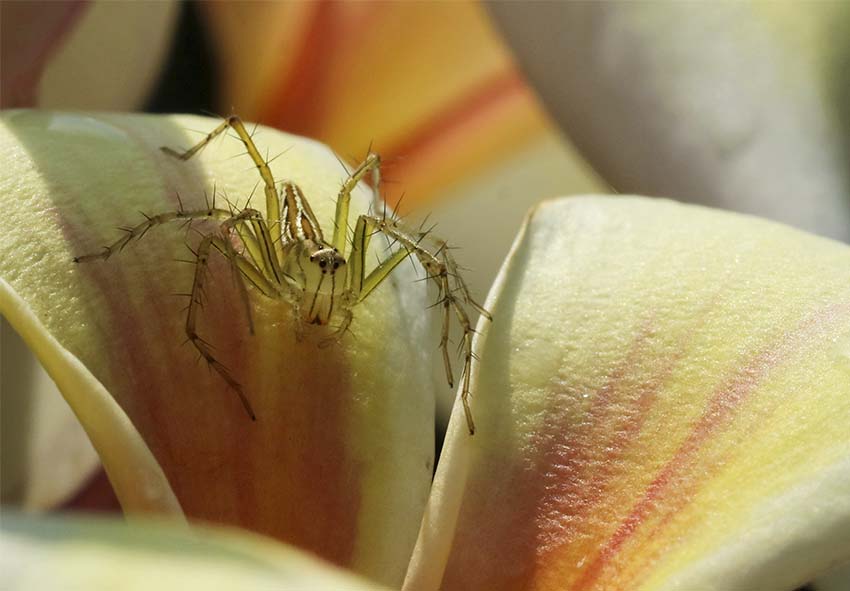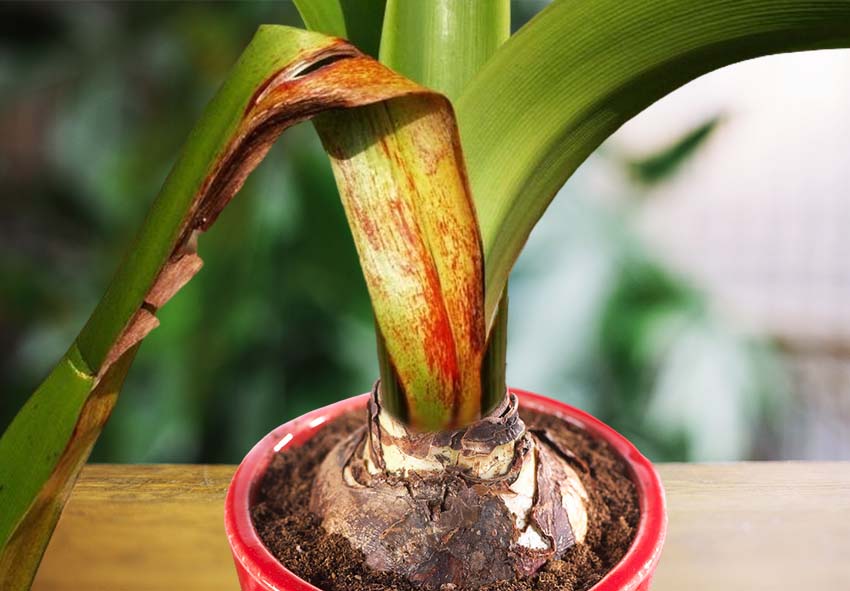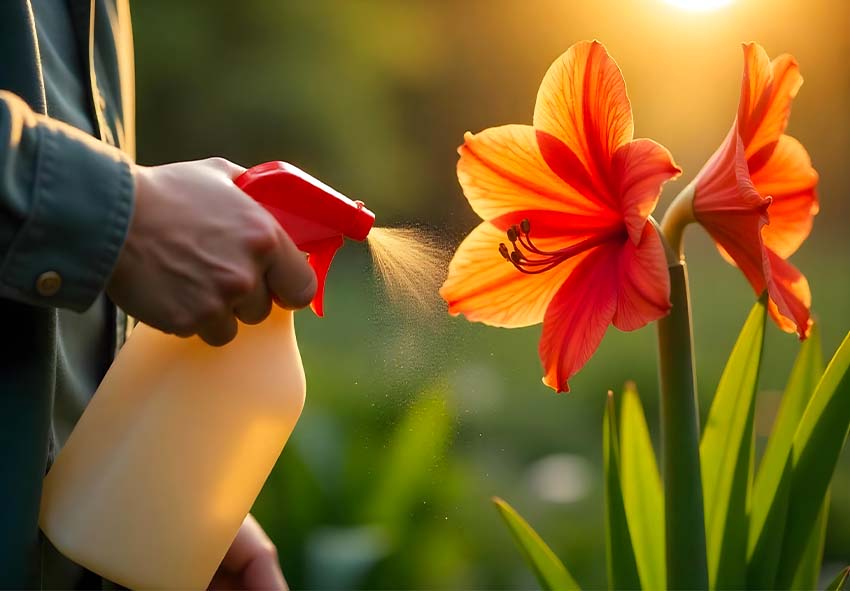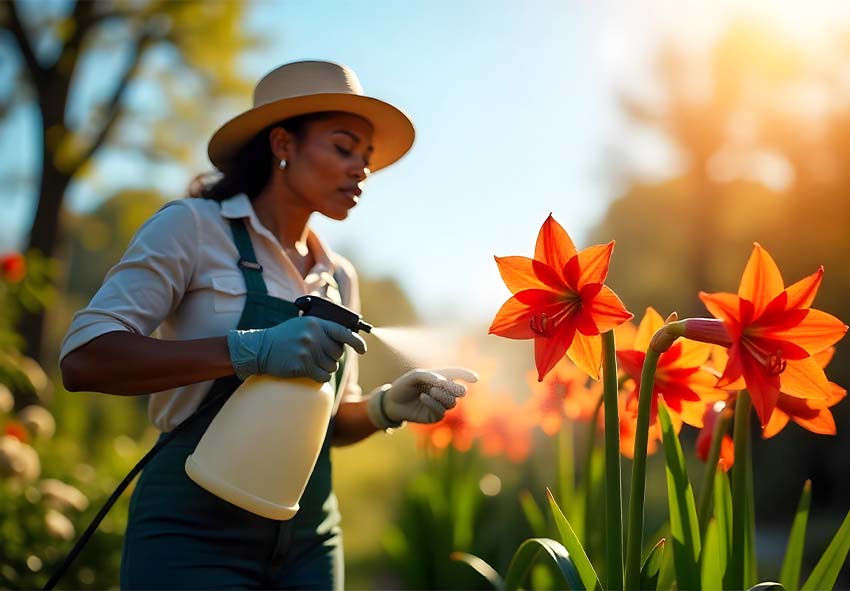Amaryllis is a beloved flowering plant, known for its striking, vibrant blooms that can light up any indoor or outdoor garden space. However, like many plants, Amaryllis is susceptible to pests and diseases that can affect its health and diminish its beauty. Proper pest control is essential to keeping your Amaryllis thriving and ensuring that it blooms successfully year after year. This article will guide you through the common pests and diseases that threaten Amaryllis and offer practical solutions, including natural remedies and chemical treatments. Our gardening blog is a perfect place to find all the information you need!
Common Pests Affecting Amaryllis

Amaryllis plants can fall victim to several pests that hinder their growth and beauty. From aphids to spider mites, these pests sap vital nutrients from the plant, leading to weakened blooms and damaged leaves. Recognizing the signs of infestation early is key to protecting your Amaryllis and keeping it healthy.
Aphids
Aphids are small, soft-bodied insects that feed on the sap of Amaryllis, weakening the plant over time. These pests are often found on new growth and flower buds, where they suck the nutrients from the plant.
- Signs of infestation: Sticky residue on the leaves and stems, known as honeydew, and curling or distorted leaves.
- Control methods: Introduce natural predators like ladybugs, spray the plant with insecticidal soap, or use neem oil to deter aphids.
Spider Mites
Spider mites are tiny, spider-like pests that thrive in dry conditions, making indoor Amaryllis plants particularly susceptible. These pests feed on plant tissues, causing damage that can weaken your plant.
- Symptoms: Yellowing or stippling on the leaves and the presence of fine webbing.
- Prevention and treatment: Regularly mist the plant to increase humidity, introduce predatory mites, or apply miticides if the infestation is severe.
Mealybugs
Mealybugs are another common pest that targets Amaryllis, feeding on its sap and causing stunted growth. They are easy to identify by the cotton-like masses they leave on the plant.
- Identifying mealybugs: Look for white, cottony clusters on the leaves and stems.
- Control strategies: Dab affected areas with rubbing alcohol, use horticultural oil, or treat with systemic insecticides for more extensive infestations.
Fungus Gnats
Fungus gnats are small, flying insects whose larvae feed on organic matter in the soil, damaging the Amaryllis roots in the process.
- Signs: Adult gnats flying near the plant or crawling on the soil surface.
- Prevention and treatment: Allow the soil to dry out between waterings, use sticky traps to catch adult gnats, and consider biological controls like beneficial nematodes.
Common Diseases Affecting Amaryllis

In addition to pests, Amaryllis plants are also vulnerable to various diseases, often caused by fungal infections or poor growing conditions. Diseases like red blotch and root rot can severely impact plant health if left untreated. Understanding the symptoms of these diseases can help you take quick action to save your plant..
Red Blotch (Stagonospora Curtisii)
Red Blotch is a fungal disease that can cause significant damage to Amaryllis. It primarily affects the leaves and flower stalks, reducing the plant’s ability to thrive.
- Symptoms: Red streaks or spots on leaves and flower stalks.
- Treatment: Remove infected parts of the plant, improve air circulation, and apply a fungicide to control the spread of the disease.
Root Rot
Root rot is a common issue caused by overwatering or poor drainage, leading to soggy soil and decaying roots. Left untreated, this can cause the entire plant to wilt and die.
- Symptoms: Yellowing leaves and black, mushy roots.
- Prevention and control: Use well-draining soil, avoid overwatering, and apply a fungicide if root rot is detected.
Botrytis Blight
Botrytis Blight is a fungal disease that thrives in damp conditions, often attacking Amaryllis during the cooler months.
- Symptoms: Gray mold on flowers, buds, and leaves.
- Management strategies: Improve air circulation around the plant, remove any affected parts, and apply fungicides to manage the disease.
Natural Remedies for Amaryllis Pests

For gardeners looking for eco-friendly solutions, natural remedies offer effective ways to combat common Amaryllis pests. Beneficial insects, organic sprays, and homemade solutions can keep pest populations under control without harming the environment. Using these remedies can be a safe and sustainable choice for maintaining healthy Amaryllis plants. It can also be helpful for some common blooming problems, which were described in our full guide for Amaryllis.
Beneficial Insects
Introducing beneficial insects is a great way to naturally reduce pest populations. Ladybugs, lacewings, and predatory mites can effectively control aphids and spider mites in your garden. Plant insect-attracting plants and avoid using broad-spectrum insecticides that could harm these beneficial species.
Organic Sprays and Home Remedies
If you prefer using organic solutions, there are plenty of safe, homemade sprays to try. Insecticidal soap, neem oil, and rubbing alcohol solutions are effective at managing pests without introducing harmful chemicals. Spray these remedies directly onto the affected areas, being sure to coat both sides of the leaves for maximum effectiveness.
Chemical Treatments for Severe Infestations
When natural remedies aren’t enough, chemical treatments may be necessary to tackle severe infestations or persistent diseases. Insecticides and fungicides can provide fast relief for damaged plants, helping to restore your Amaryllis to full health. However, it’s important to use these treatments carefully to minimize harm to the plant and environment.
Insecticides for Pest Control

For severe pest infestations, insecticides can provide quick and effective relief. Aphids, spider mites, and mealybugs can all be controlled with targeted insecticides. Look for products specifically designed for ornamental plants like Amaryllis, and avoid broad-spectrum insecticides that can harm beneficial insects.
Apply chemical treatments when natural remedies fail to control an infestation, and repeat applications as necessary based on the product guidelines. Always be sure to follow the instructions on the label for proper dosage and safe use, and take precautions to avoid contact with blooms or runoff into nearby soil or water sources.
Fungicides for Disease Management
Fungicides can help treat fungal diseases like red blotch, root rot, and botrytis blight, which can severely affect your Amaryllis if not treated early. Regular applications of fungicides can prevent the spread of these diseases and protect your plant’s foliage and roots. Choose a fungicide that targets specific fungal pathogens for the best results.
Apply fungicides early, as soon as you notice signs of infection, such as discolored or spotted leaves. Be sure to maintain good air circulation around your Amaryllis to reduce humidity, which often contributes to fungal growth. Consistent monitoring and treatment will ensure a healthy, disease-free plant.
Conclusion
Caring for your Amaryllis involves regular monitoring for pests and diseases, and taking timely action to keep your plant healthy. By recognizing the signs of common pests like aphids and mealybugs or diseases like red blotch and root rot, you can use both natural remedies and chemical treatments to maintain a thriving Amaryllis. Be proactive, and explore our online store for high-quality Amaryllis bulbs and pest control products to keep your garden blooming beautifully all year round.
Frequently Asked Questions (FAQs) about Amaryllis Pest Control
1. What are the most common pests that affect Amaryllis?
The most common pests affecting Amaryllis include aphids, spider mites, mealybugs, and fungus gnats. These pests can cause various symptoms, such as yellowing leaves, curling foliage, sticky residue, or visible webbing.
2. How do I treat fungal diseases in my Amaryllis?
Fungal diseases like red blotch, root rot, and botrytis blight can be treated with fungicides. It’s important to remove any affected plant parts, improve air circulation around the plant, and apply fungicide as directed. Preventing waterlogged soil by using well-drained potting mix and avoiding overwatering also helps prevent fungal diseases.
3. Are there any natural remedies for Amaryllis pests?
Yes, there are several natural remedies for Amaryllis pests. Beneficial insects, such as ladybugs and predatory mites, can help control pests like aphids and spider mites. Homemade insecticidal soaps or neem oil solutions are also effective for treating mild infestations. These options are eco-friendly and reduce the need for chemical treatments.
4. Can I purchase Dutch Amaryllis bulbs from your online store?
Yes, you can find a variety of Amaryllis bulbs available for purchase in our online store Dutch-bulbs.com. We offer a range of colors and varieties to suit your preferences. Our bulbs are carefully selected for quality, and we provide detailed planting and care instructions to help you successfully grow beautiful Amaryllis flowers in your own home.
5. When should I use chemical treatments for Amaryllis pests?
Chemical treatments should be used when natural remedies fail to control severe infestations of pests like aphids, spider mites, or mealybugs. Insecticides provide a fast-acting solution but should be applied carefully, following the product instructions. Always choose products safe for ornamental plants and avoid harming beneficial insects or nearby plants.
Published: 25.10.2024
